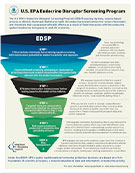October 17, 2016
ACC Comments on Lancet Paper Alleging Significant U.S. Health Care Costs from Exposure to EDCs
WASHINGTON (October 17, 2016) – The American Chemistry Council (ACC) issued the following statement in response to a paper published in The Lancet Diabetes & Endocrinology by Trasande et al. alleging significant U.S. health care costs from exposure to endocrine disrupting chemicals (EDCs):
“Today’s release is the latest in a series of papers in which Dr. Trasande and his colleagues demonstrate a casual indifference toward scientific principles, yet a dogged pursuit of headlines. The paper’s conclusions are speculative at best and based on incomplete, inaccurate information about the relationship between chemicals and human health. Further, the methods the authors used to generate the economic data have been widely criticized by economists, scientists and even the European Commission.
“The only thing more troubling than the paper’s many flaws is that it does virtually nothing to advance the protection of public health. The vast majority of studies cited by the authors do not show that exposure to specific chemicals causes health effects. Rather, the authors have cherry-picked studies that show incomplete and inconsistent correlations between exposure to certain chemicals and specific health outcomes, many of which have been strongly disputed by independent scientists.
“Most of the chemicals included in the paper are not endocrine disruptors, a term that, if used responsibly, is reserved for substances proven to cause adverse health effects through interaction with the endocrine system. The authors themselves have previously conceded that many of the chemicals they cite do not meet the World Health Organization’s widely-embraced definition of an EDC. Instead, they implicate substances that have been shown to interact with the endocrine system similar to the way in which Vitamin D, cocoa and caffeine naturally do.
“ACC strongly supports the U.S. Environmental Protection Agency’s Endocrine Disruptor Screening Program, and we will continue to contribute meaningful, scientifically-validated data to help policymakers make sound decisions about the safety of chemicals in commerce.”
Concerns others have expressed about previous papers by Trasande et al. which looked at the health costs of exposure to EDCs in the EU:
Estimates on costs of diseases related to exposure to EDCs which were recently published should be taken with caution. There are concerns over the validity of these estimates and the methods used to calculate them, which are linked to the scattered evidence. [1]
– European Commission
Most of the content of these publications is interpretation and informed speculation and none of us should lose sight of this…What worries me about this approach is that…these highly presumptive estimations inevitably become viewed and presented as being far more solid than they actually are. [2]
– Richard Sharpe, Professor of Reproductive Health Research, University of Edinburgh
Producing cost estimates to shape policy may be helpful in promoting certain causes, but it should be done with caution. The current range of annual cost estimates spans two orders of magnitude (€2.5 billion to 239 billion) and underscores the high levels of uncertainty that arise around each of the decision points in the analysis. The authors’ median cost estimate of €157 billion (over 1% of EU gross domestic product) annually seems implausibly high if it is indeed just the ‘tip of the iceberg’. [3]
– Roeland J. Middlebeek, MD, Joslin Diabetes Center
[1] European Commission, “ Defining criteria for identifying endocrine disruptors in the context of the implementation of the plant protection products regulation and biocidal products regulation.” June 15, 2016.
[2] BBC News, “ Hormone-disrupting chemicals ‘cost billions’.” March 6, 2015.
[3] Journal of Clinical Endocrinology & Metabolism, “ Letter to the Editor: Re: Neurobehavioral Deficits, Diseases, and Associated Costs of Exposure to Endocrine-Disrupting Chemicals in the European Union.” June 5, 2015.



